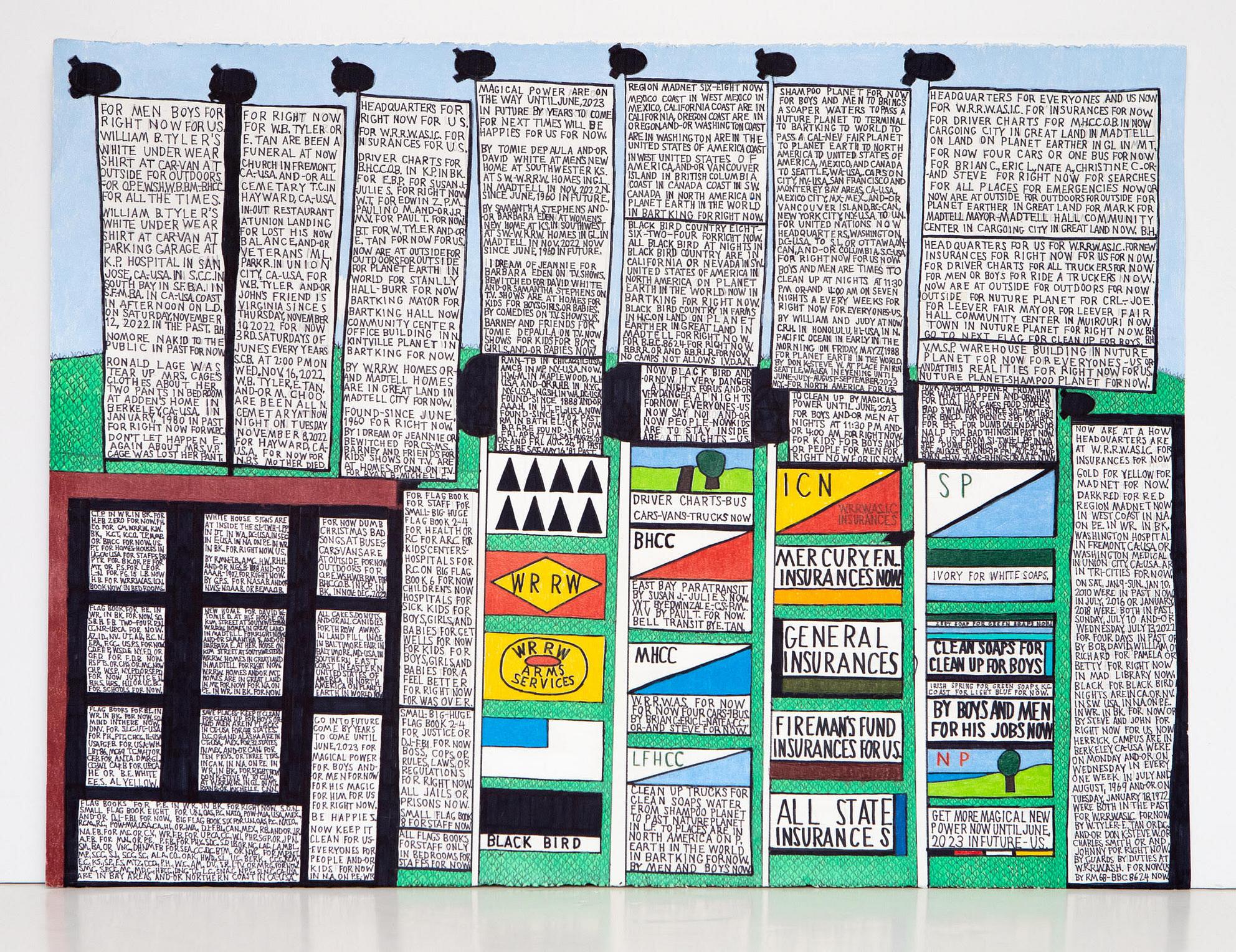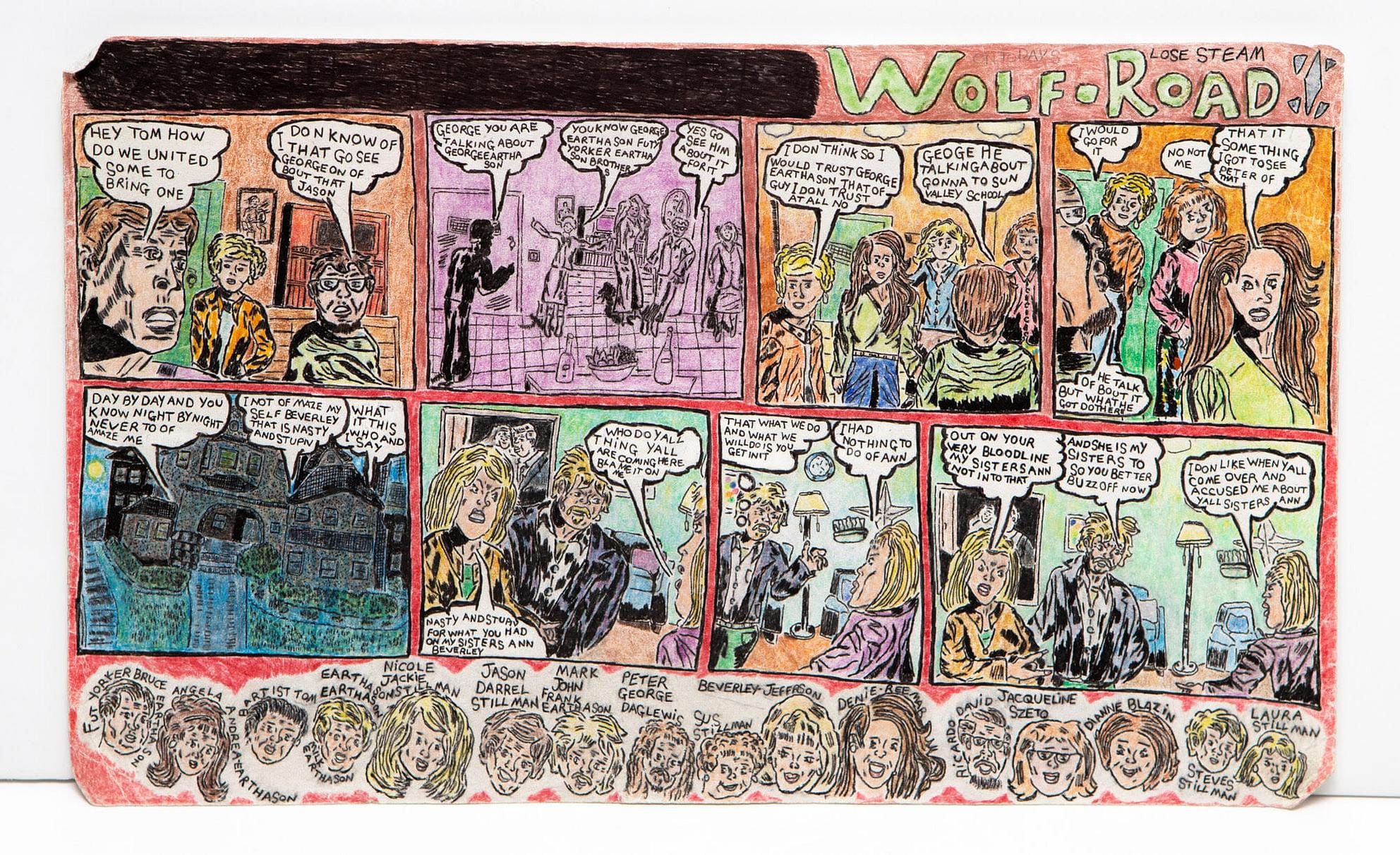In Gregory Stoper’s ink on paper drawings, pictorial text takes on the intonations of spoken language. In bowed compositions, the artist presents biographical sentences in a downward sloping motion. The figuration mimics speech and gives the text a lyrical score. One imagines breathlessness, and an asymptotic inflection that begins loud and then drones towards silence.
Stoper is one of over a dozen studio artists whose work is on display in a new exhibition at Oakland’s Create Growth Art Center. The exhibition, entitled, Text Me b explores the visual dimensions of language.

Founded in 1974, Creative Growth has been a bastion of advocacy and support for the inclusion of artists with developmental disabilities in contemporary art. By working with their own studio artists to mount exhibitions, the gallery team is able to curate highly individualized works into cohesive shows bound by shared community.
A double panel cartoon strip in the hyper-American, fantastical American, style of Archies comics by Larry Randolph is perhaps the best pop art I have ever seen. Nebulous characters, all blisteringly generic, have nonsensical dialogue across expertly rendered frames. The disconnect between familiarity of form and abstracted language is dismantling. The undercut legibility creates a lingual volley, swinging text rapidly between informational content and pure aesthetic. Beneath the panel, disembodied heads crowd the composition. Each resembles the former and their grinning, blank faces feel innocuous but also vaguely threatening, like a crowd assembled but not yet sure of its purpose.
In the front corner of the gallery, four framed scrolls display Dan Miller’s concrete poetry. Using repetition and thoughtful applications of empty space, each work feels geographical, like the right consideration of the text’s architecture might reveal a whole landscape of meaning. The sense of encoded meaning in Miller’s concrete language is reminiscent of the artist Ulises Carrion. In his book Sonnet(s), Carrion takes a single sonnet and treats it with 44 structural variations, making the words a raw material to be sculpted in endless forms. In Carrion’s work, as in Miller’s, it’s difficult to discern whether text is being used as aesthetic material or for its communicative value.
Beneath a row of hand-stitched flags, William Tyler’s nautical text assemblies wrap language in careful rectangular perimeters, espousing declarations. Within any of the four pieces included in Text Me, the artist’s sentences follow a repeated structure of espoused declarations. This gives his compositions an evaluative quality, which is fitting, as he’s often creating rules in his drawings, offering judgements, or inventing laws, like: “ALL GIFT SHOPS ARE AT HOSPITALS” or “DREAM FOR DEEP SLEEP FOR RIGHT NOW FOR KIDS AND PEOPLE AT HOMES”.
In Thoughts and Vision, the poet H.D. calls for the reinvigoration of familiar thoughts and images with a newfound sensuality and curiosity to “get out of this murky, dead, old, thousand-time explored old world.” Text Me does just this for written language. Text in art is freed from confining systems that structure written language like grammar, syntax, and coherence, and it can exist instead as pure form. It’s fascinating to see how artists play with the spectrum of comprehensibility.







